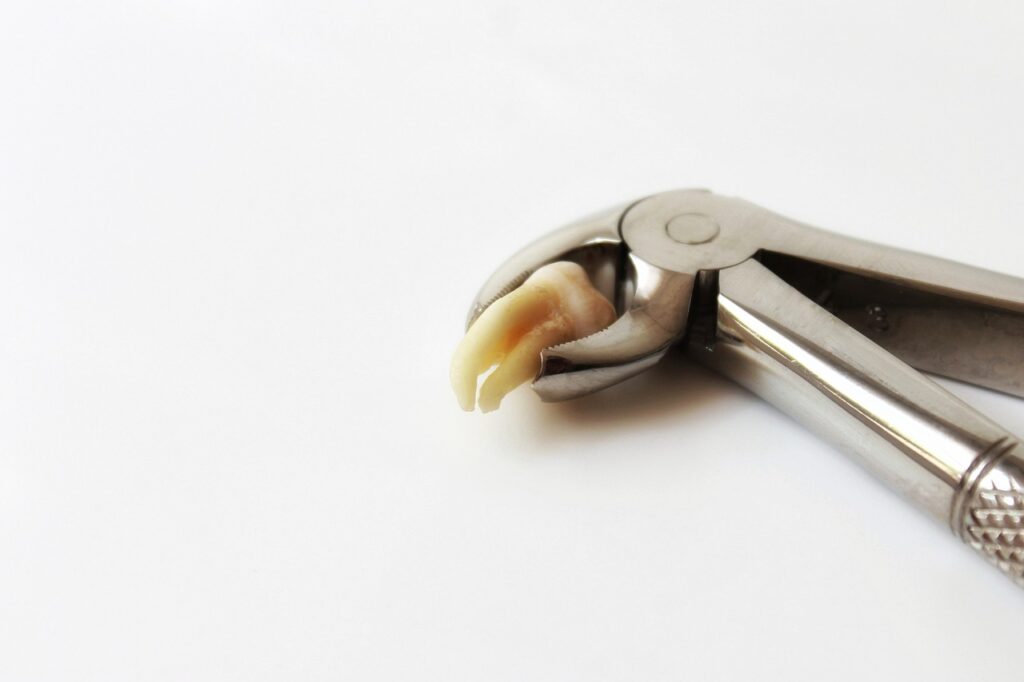
Tooth removal or tooth extraction, though a common dental procedure can evoke anxiety and uncertainty in many individuals. Whether it’s due to a problematic wisdom tooth, severe decay, or overcrowding, understanding the process and post-extraction care is crucial for a smooth recovery and maintaining oral health.
Reasons for tooth extraction:
- Decay and Damage: Tooth decay, often caused by poor oral hygiene, can lead to severe damage. In such cases, extraction becomes necessary to prevent the spread of infection to neighbouring teeth.
- Overcrowding: Orthodontic treatments may necessitate the removal of a tooth to create space and achieve proper alignment. Overcrowded teeth can lead to misalignment issues, impacting both aesthetics and functionality.
- Gum Disease (Periodontal Disease): Advanced gum disease can lead to the loosening of teeth due to the deterioration of supporting structures. Extraction may be recommended to eliminate the source of infection and prevent further damage.
- Impacted Wisdom Teeth: Wisdom teeth, or third molars, often emerge misaligned or impacted, causing pain and potential damage to surrounding teeth. Extraction may be recommended to alleviate discomfort and prevent complications.
- Infection: A persistent tooth infection, usually stemming from untreated cavities, may require extraction to stop the spread of bacteria and protect overall oral health.
- Supernumerary tooth: Occasionally, individuals may have extra teeth, known as supernumerary teeth, which can disrupt the natural alignment of the dentition. Extraction may be required for a harmonious dental arch.
- Failed Root Canal Treatment: In some cases, a tooth that has undergone root canal therapy may experience persistent infection or complications. If the tooth cannot be successfully treated and saved, extraction may be recommended to prevent further issues.
- Trauma or Injury: Teeth that have been severely damaged due to trauma, accidents, or injury may require extraction if they cannot be adequately restored through dental procedures like crowns or root canals.
The Process:
- Initial Consultation: Before the extraction, your dentist will conduct a thorough examination, possibly including X-rays, to assess the tooth’s condition and surrounding structures. This evaluation helps determine the most appropriate extraction method.
- Local Anaesthesia: Most extractions are performed under local anaesthesia to numb the area around the tooth. In some cases, sedation may be used to ensure the patient is comfortable and relaxed during the procedure.
- Extraction Techniques: There are two primary extraction techniques: simple extraction and surgical extraction. Simple extraction is suitable for visible and easily accessible teeth, while surgical extraction is reserved for more complex cases, such as impacted or broken teeth.
- Aftercare: Following the extraction, proper aftercare is crucial for a smooth recovery. Your dentist will provide specific instructions, which may include:
- Using prescribed pain medication as directed.
- Applying ice to reduce swelling.
- Avoiding strenuous activities.
- Eating soft foods and avoiding hot or spicy items.
- Practicing gentle oral hygiene, being cautious around the extraction site.
- Follow-Up Appointments: It’s essential to attend any follow-up appointments scheduled by your dentist. These visits allow them to monitor your recovery progress, address any concerns, and remove any stitches if necessary.
At Teeth Care Centre, the best dental hospital in Ahmedabad, we have an expert team of the best Oral surgeons with more than 15 years of experience. With the continuous advancement in the latest technology, TCC uses painless injection; laser for minimum invasive bloodless tooth extraction surgeries and stringent 7 step sterilization protocol that meets ADA and CDC guidelines.
Tooth extraction is a routine dental procedure aimed at preserving overall oral health and preventing further complications. By understanding the reasons for extraction, the process itself, and following proper aftercare guidelines, you can ensure a smooth recovery and maintain optimal oral hygiene.